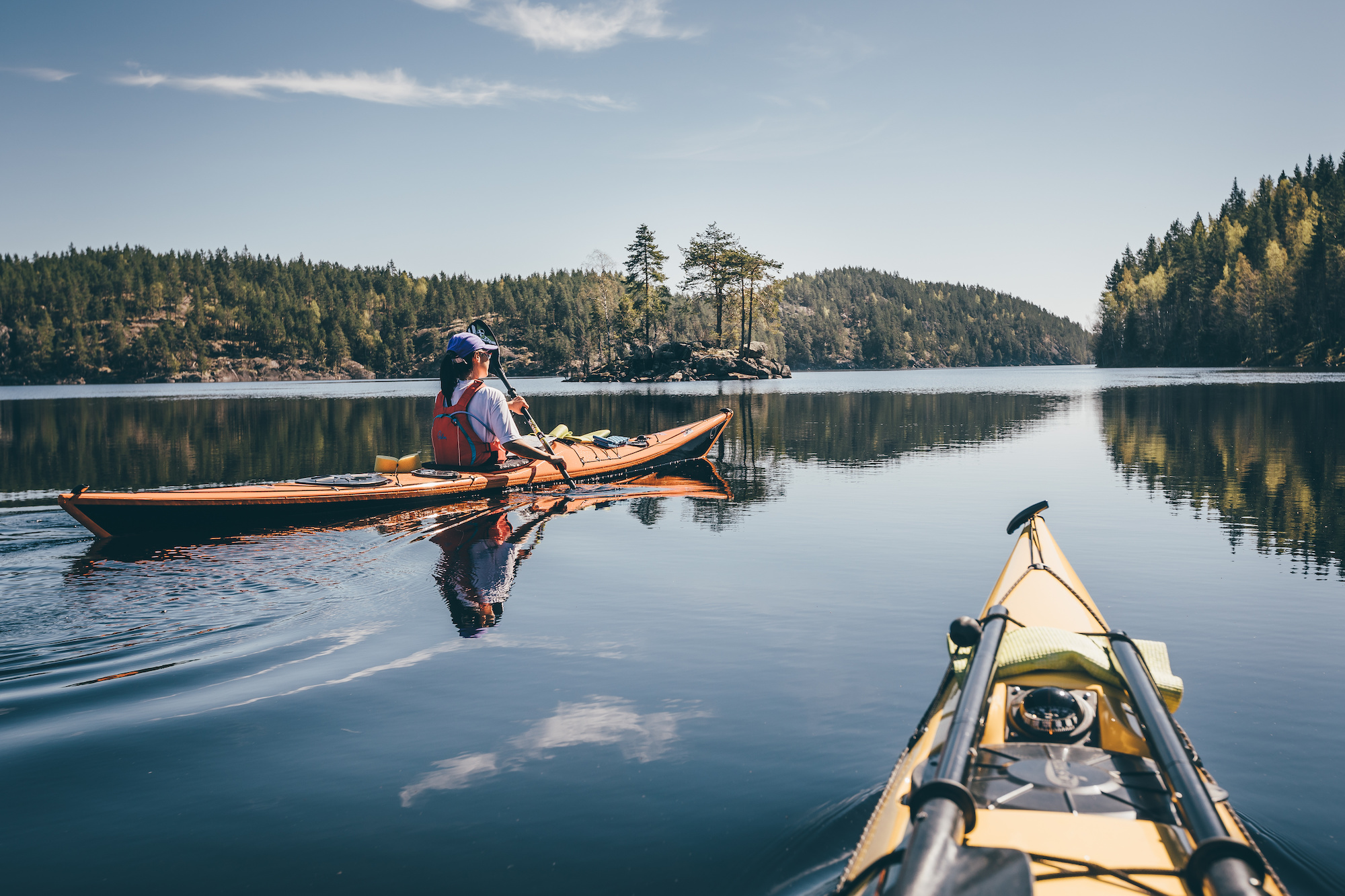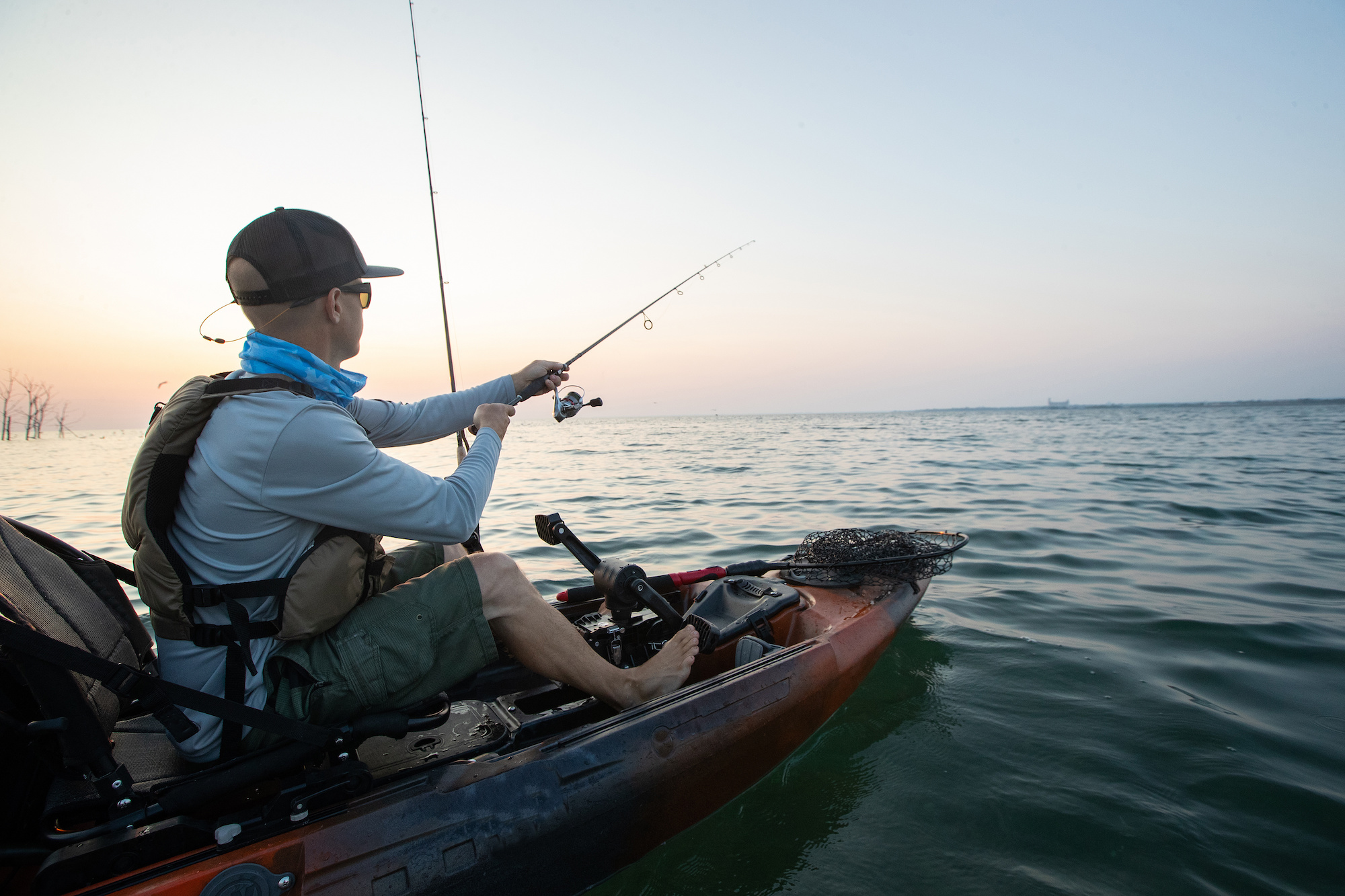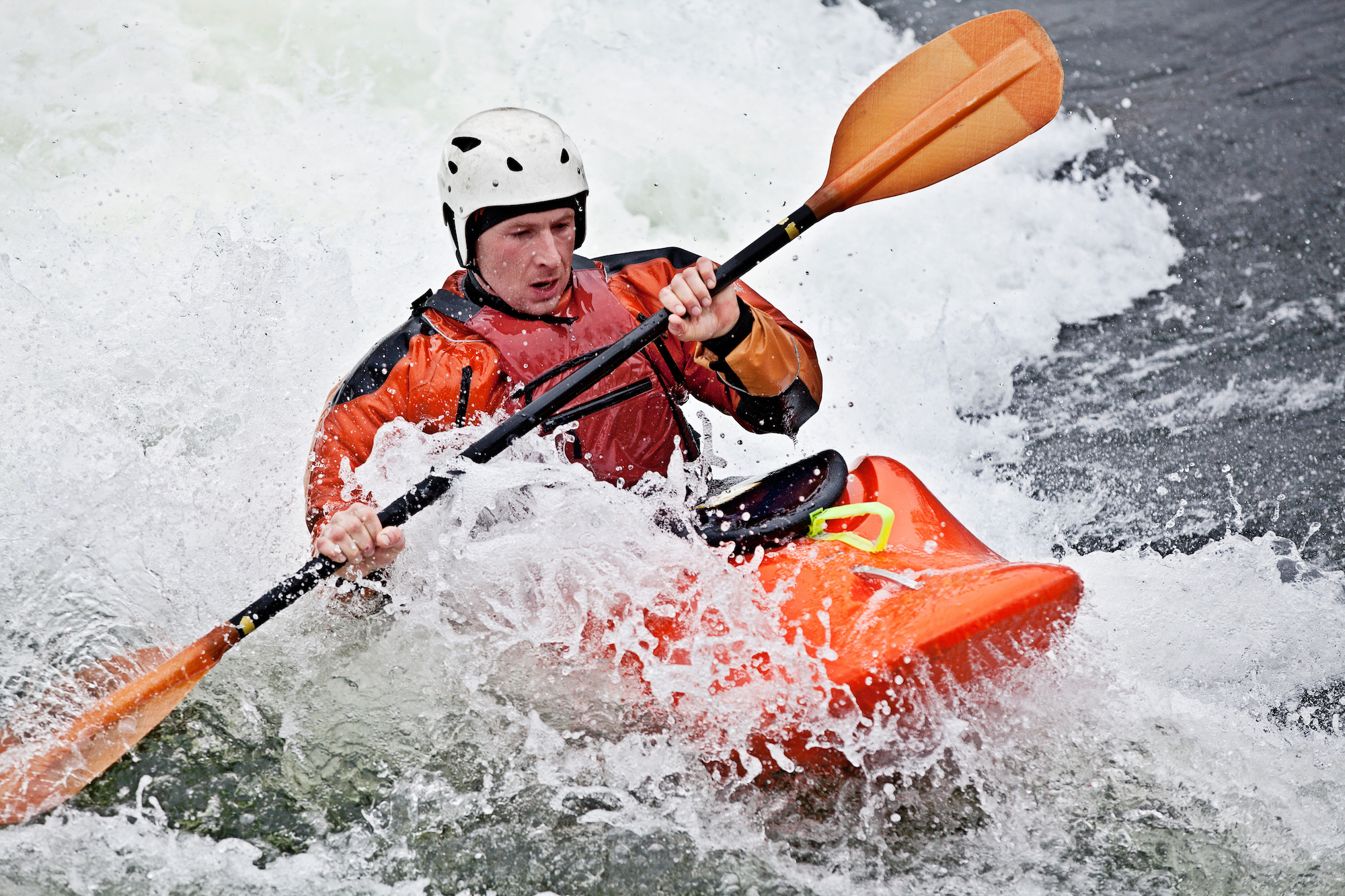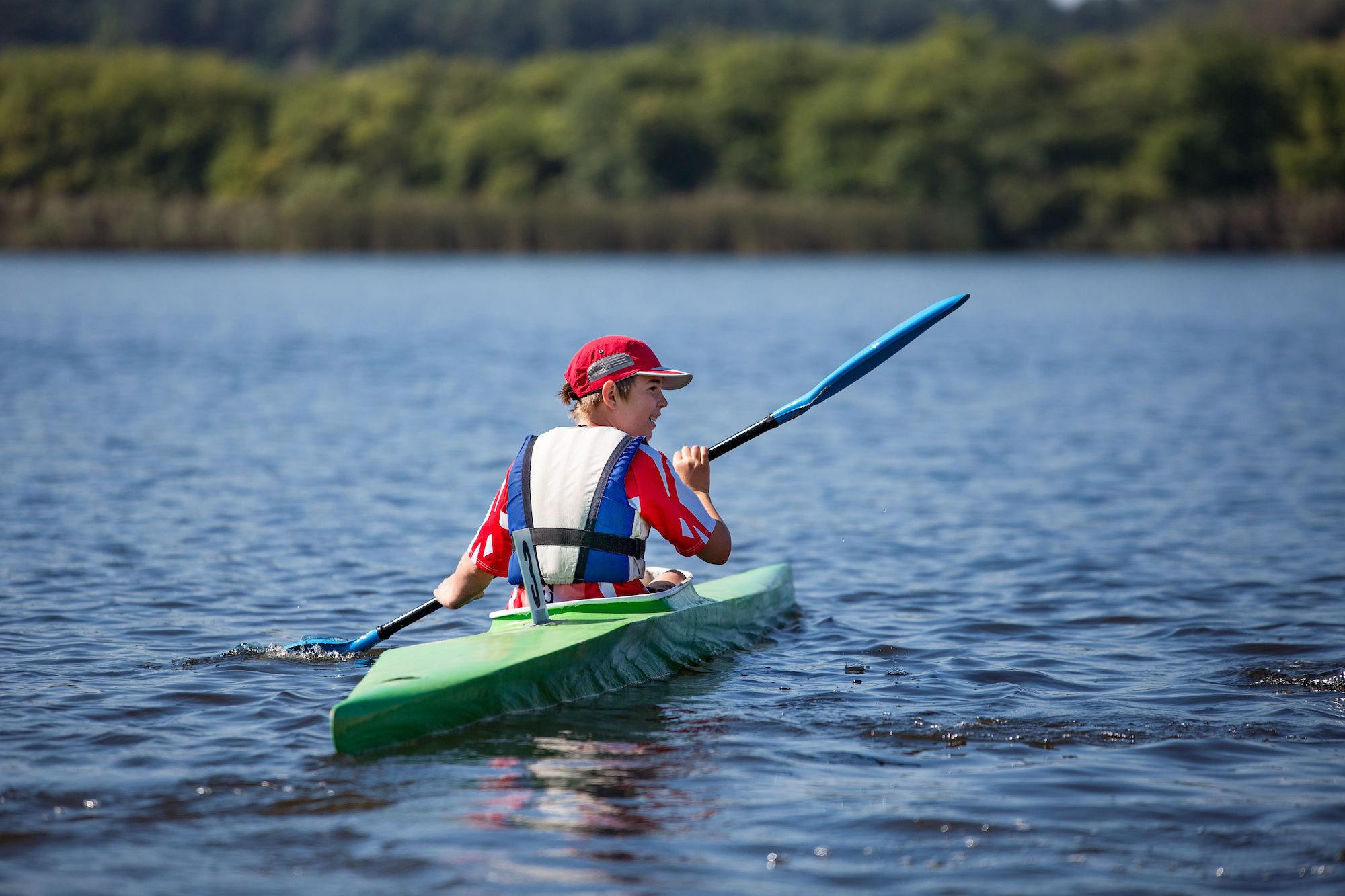What to wear when kayaking depends on two major considerations: the weather and the kind of water you’ll be paddling in. The right clothing and gear will keep you safe and comfortable while maximizing your time fishing, hunting, or just enjoying your time on the water.
The “right” choice for one kayaking adventure might not be the best choice for another, however, and a kayak fisherman crossing the bay in one of the best ocean kayaks will be dressed very differently than a kayaker paddling down rapids on a glacial river. These choices can vary even on the same waterbody, as that bass pond you fished all summer will be a different place to paddle come duck season. Once you understand the risks of being on the water and make some smart decisions to prepare, it’s easy enough to figure out what to wear when kayaking.
Always Wear a Life Vest
Before we dive into shoes, layers, and other wearables, it’s important to note the one piece of gear that you should always wear when kayaking: a life vest. These are officially known as personal flotation devices, or PFDs, but they’ve earned that nickname over the years because they literally save lives.
Drowning deaths occur every year, and sadly, many of them are preventable. In 2022, roughly 85 percent of the people who drowned in U.S. waters were not wearing a life a jacket at the time, according to the U.S. Coast Guard.
Some tips for choosing and using life vests:
- The USCG classifies life vests into five different types. Most hunters, anglers, and everyday paddlers will use Type III (flotation aids) or Type V (special use) PFDs, but Type I PFDs are recommended for offshore anglers and children boating in rough waters. Read the regulations for the area where you’ll be paddling or chat with someone at your local kayaking shop to determine the best PFD for your needs.
- Buy a life jacket that you’ll actually want to wear. The best life vests come in a variety of shapes and sizes, and many of the modern styles are tailored specifically for hunters and anglers. PFDs are more comfortable and practical than ever, so there is no excuse for kayaking without one.
- Keep it snug. Life vests should be tight-fitting enough that they don’t rise up when someone else pulls up on the shoulder straps.
- Keep it on. This might sound redundant, but kayakers often get complacent and take their life vests off when paddling. If you never take it off, you’ll always be prepared.
Other important safety items worth including in your life vest:
- A sharp knife. It’s never a bad idea to have a knife on you while outdoors, but it’s especially important to have an emergency cutting tool when paddling. Foot entanglements with rope and/or fishing line can lead to drowning, and a knife could save you or your partner’s life. There are some paddling-specific options that have blunted tips and attach to your life vest. The key is keeping one close at hand.
- A whistle. Sometimes you need help quickly on the water, and blowing a whistle is a great way to call for it. Kayaks also ride low in the water, making it hard for other boaters to see you, and a short whistle blast is a good way to make your presence known. Just make sure you buy an all-plastic whistle that is designed to get wet. (Many whistles feature a small ball inside the chamber that will swell up when wet, which renders the whistle useless.)
- A mirror, flare, or other signaling device. This can help alert aircraft or another boat should you need emergency assistance. It’s not a bad idea to carry a visual signal on small lakes or rivers, but it’s especially important when paddling on the ocean or other large water bodies.
Deciding What to Wear
The weather and the water you’re paddling in are the two most important considerations when deciding what to wear when kayaking. If you’re paddling in cold conditions, think about how you’ll stay warm on the water and keep from getting hypothermic if you fall in. If you’re paddling in warm conditions, prioritize staying cool and shaded from the sun. In either situation, choose clothing items that dry quickly, allow for freedom of movement, and are comfortable enough to wear for long periods of time. Avoid cotton at all costs.

Regardless of what the weather feels like, the number one rule when deciding what to wear when kayaking is this: Dress for the water temperature and not the air temperature. In other words, dress like you’ll be swimming at some point…even if you don’t plan to.
Read Next: The Best Sitting Kayaks of 2023
Beyond just the temperature, the type of water is also key. If you’re kayaking in whitewater, where swims are common and potentially life-threatening, you’ll want to wear a helmet and other safety gear in addition to the items below.
A typical kayaking outfit will include the following in addition to a life jacket:
- Shoes. Good sturdy shoes are a must when kayaking. At the very least, you need shoes that will stay on your feet if you step into the water. Neoprene booties, sneakers, wading boots, and sandals with tight-fitting straps are all good options. Avoid flip flops.
- Shorts and/or pants and a shirt. Quick-dry materials and/or neoprene depending on the conditions. Do not wear cotton.
- Hat. This could be a ball cap or a beanie. The key is keeping your head and face shielded from the elements.
- Sunglasses. Water reflects and intensifies the sun’s glare, and it’s worth bringing polarized sunglasses even on cloudy days.
Optional clothing items include:
- Gloves. Cold-weather gloves will keep your hands warm. Warm-weather gloves offer sun and blister protection.
- Neck gaiter. These can help break the chill on the water. They’re also great for warm days, as you can soak them and wear them around your neck to stay cool.
- Extra layers and/or change of clothes. This is critical in cold conditions, but it’s always nice to have spare clothing in a dry bag or in your car in case you take an unexpected swim.
What to Wear When Kayaking in Warm Conditions
The sun and heat are your biggest concerns when kayaking in warm conditions. And while it can be tempting to just wear a bathing suit, this is a great recipe for a blistering sunburn. It also exposes you to scrapes, rashes, bug bites, and other maladies that are easily prevented if you keep your skin covered.

Sunscreen can help prevent sunburn, but most lotions tend to wash off when wet, and it can be hard to re-apply these often enough when kayaking. So, if you’re on the water for an extended period of time, and especially if you’re kayak fishing, leave the swimsuit for the pool. A good outfit for kayak fishing in warm conditions would include:
- Sandals, lightweight sneakers, or other tight-fitting shoes. (Consider stingray boots if you’re planning on wade fishing where rays are present.)
- Quick-dry lightweight pants. Wear shorts if you must, but you’ll risk badly sunburned knees if you don’t re-apply enough sunscreen throughout the day.
- Quick-dry lightweight shirt with long sleeves. Lightweight hooded shirts are great for added sun protection.
- Hat with a brim and sunglasses.
What to Wear When Kayaking in Cold Conditions
The risks associated with a swim go up drastically when kayaking in cold conditions. Hypothermia becomes your biggest concern, since we lose body heat four times faster in cold water than we do in cold air. This is where cold water immersion gear comes into play. (Remember to dress for the water temp and not the air, since the coldest rivers and bays can be as deadly in July as they are in January.)
Cold water immersion gear comes in two main categories: wetsuits and dry suits. Wetsuits are typically made of neoprene, and they work by trapping a thin layer of water close to your skin where it can be heated by your body. Dry suits are made of waterproof material, and they feature watertight gaskets around the wrists and neck that keep you dry while paddling, except for your face and hands.

One good rule of thumb for whether you need cold water gear is known as the 120 Rule. The rule states that hypothermia is a real concern when the water temperature plus the air temperature equals less than 120 degrees. For example: It could be a pleasant 65 degrees outside while the water you’re paddling—say, one of the Great Lakes—averages around 48 degrees. That means you should consider wearing cold water gear, because 65 + 48 = 113, which is less than 120.
Read Next: The Best Fishing Kayaks of 2023
If the 120 rule is a factor, first consider the likelihood that you’ll end up taking a swim. If the chances are high, get a dry suit. If the chances are low, consider wearing either a full-body wetsuit or donning some neoprene layers in addition to the clothing items recommended below.
If the 120 rule isn’t a factor, but you’re still kayaking in relatively cold weather, here are some tips on what to wear:
- Neoprene booties. You can get away with tight-fitting sandals or sneakers, but your feet might get cold.
- Base layers. Long underwear made of merino wool or some other synthetic material should be worn closest to your skin. Do not wear cotton.
- Fleece layers. Fleece sweaters and vests (along with pants if it’s cold enough) should be worn over your base layers. Avoid down jackets as the feathers clump up and lose their insulating abilities when wet.
- Durable pants. Rain pants or other waterproof pants will help keep your legs dry.
- Durable shell or rain jacket. While it’s hard to keep your torso completely dry when kayaking, a good rain jacket or hard shell with velcro wrist closures will keep out most of the water. Some companies also make paddling jackets specially designed for cold-weather kayaking.
- Warm hat and sunglasses.
FAQs
Q: Do you need waterproof pants for kayaking?
Not necessarily. But if you’re paddling in cold conditions, waterproof pants are highly recommended for keeping your legs warm. It’s important to note that most rain pants and those advertised as “waterproof” will allow water to seep in while kayaking. If you want your legs to stay completely dry, you’ll have to invest in a pair of paddling-specific pants that feature ankle closures or booties.
Q: Do you wear a shirt while kayaking?
Yes. It’s tempting to ditch the shirt in hot weather but paddling without a shirt is a good way to get a bad sunburn. The best kayaking shirts have long sleeves and are made of lightweight, quick-dry materials that provide high protection from the sun’s rays.
Q: Should you wear jeans when kayaking?
No. In fact, if there was a list of the worst things to wear when kayaking, jeans would be somewhere near the top. Jeans absorb water easily, they get itchy when wet, and take forever to dry. Jeans can also weigh you down in the water, which makes a swim even more dangerous.
Final Thoughts

When deciding what to wear when kayaking, the most important considerations are the weather and the type of water you’ll be paddling in. Remember to dress for the water temperature and not the air temperature, as you’ll want to be prepared for an unplanned swim. If you’re paddling in cold conditions, refer to the 120 Rule to determine whether or not you need cold water gear. Most importantly, always wear a life jacket.
